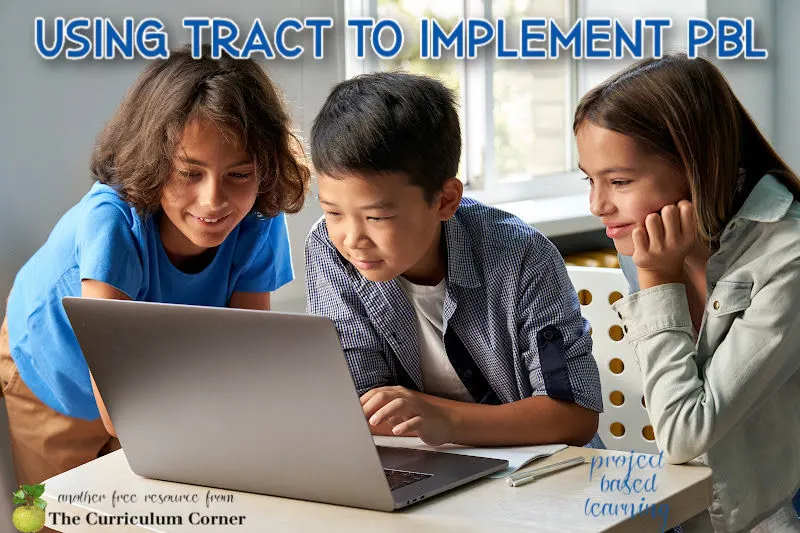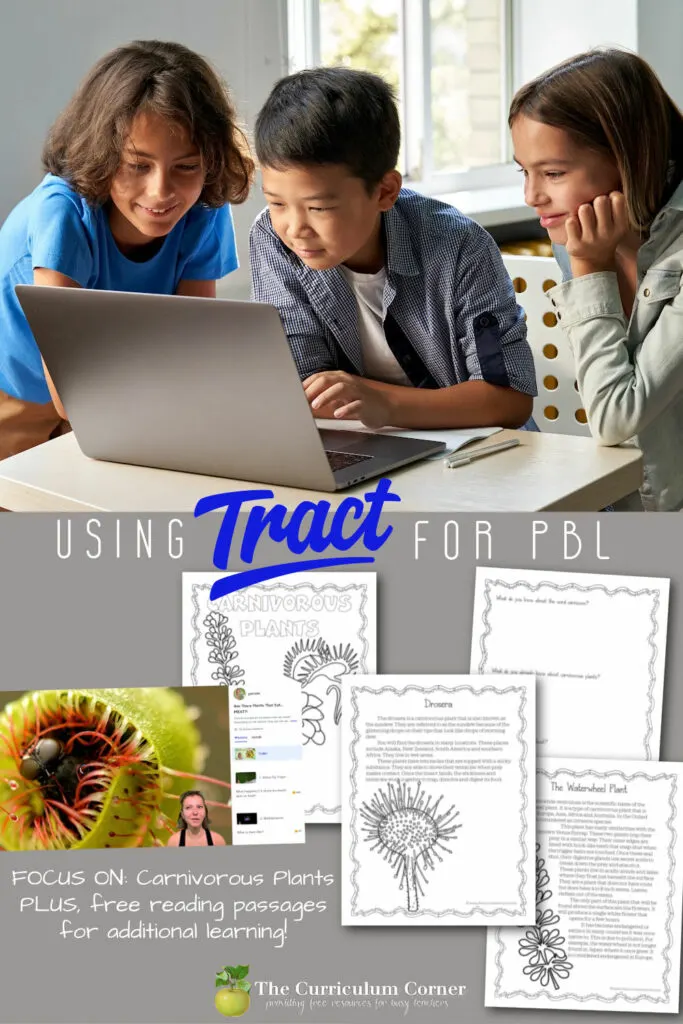This is a post sponsored by Tract. All opinions are my own.
Have you taken a look at Tract yet? Add it to your collection of resources when working on Project Based Learning in your classroom!
Since I was first introduced to Tract in the fall, I’ve spent a little more time exploring this resource. It feels like every time I look, I find new ways to implement the site in the classroom.
First of all, I wanted to make sure you know that it is FOREVER FREE for teachers. I’ll share my code at the bottom of this post so that you can set up your own account.
New to Tract?
If you are new to Tract, let me start by sharing what it is. (If you are already familiar with the site, you can hop to the bottom to grab a freebie from me plus a code to set up your free account.)
Tract has been created to assist teachers in project-based learning.
Project-based learning is an amazing approach to getting children engaged and excited about learning.
One of the biggest struggles for teachers is finding a way to support different groups of children learning about a different subject at the same time.
This is where Tract comes in!
It is a platform packed with topics your students might already be exploring.
It’s simple for the teacher to navigate and the platform is designed so you won’t need to spend extra time learning something new. It’s also easy enough to use that your students will be able to browse and explore on their own.
Contributors have created videos like those students would see on TikTok or YouTube. These creators present content in a fun way for students.
Not only is this a hook for learning, but students are also given the opportunity to create their own content!
At the end of their project, they can create their own artifact to share. This might even mean that students will research and write their own script. They could then record their content and share on Tract (or just share with the class.)
Think of all the skills students will be learning and practicing by using what they learn to create!
It’s such a natural connection to what students already are doing for fun – you are just adding in the learning! Children are naturally excited and engaged because they are becoming the creators.
Carnivorous Plants
When I taught second grade, I had a set of books for small group instruction that taught about carnivorous plants. It was the most popular book set I had in my classroom. I would begin working on it with one group and slowly more and more students would want it to be a book their small group read.
The books belonged to the school so I no longer have them but since then I’ve considered creating some type of resource for carnivorous plants.
This is where Tract comes in! Last week as I was checking on different paths, the one on carnivorous plants grabbed my attention.
This path on Tract is a shorter one. It has a trailer that can be used for an introduction plus three videos on different types of carnivorous plants. These are: Venus fly traps, bladderworts and pitcher plants.
I started out by watching these and knew they would be high interest for students.
I then came up with the idea to create some reading passages for other types of carnivorous plants. The plants I focused on in my passages are: waterwheel plant, drosera (or sundew), Byblis and butterwort.
The videos and the passages can work together as a research source for students.
Because students can become creators of their own content, you could have students create their own videos to share what they learn from reading and researching.
Maybe you could even purchase a carnivorous plant for your classroom – these can often be found locally.
One idea is for students to begin by learning about carnivorous plants. They could then create a guide for taking care of them as a plant in the classroom.
Or maybe this study will spark an interest in other types of plants.
Obviously, there are endless ideas for implementing Tract in your classroom – this is just one idea that I thought of as I was exploring. I’d love to hear how you decide to have your students use Tract!
Need to sign up for your free account?
Visit the site here: teach.tract.app.
Here is the access code you will need: THECURRICULUMCORNER
Looking for this mission on Tract?
You will find it here: Are There Plants That Eat…MEAT?!
Want to grab the free reading passages I created?
You can download those here: Reading Download



